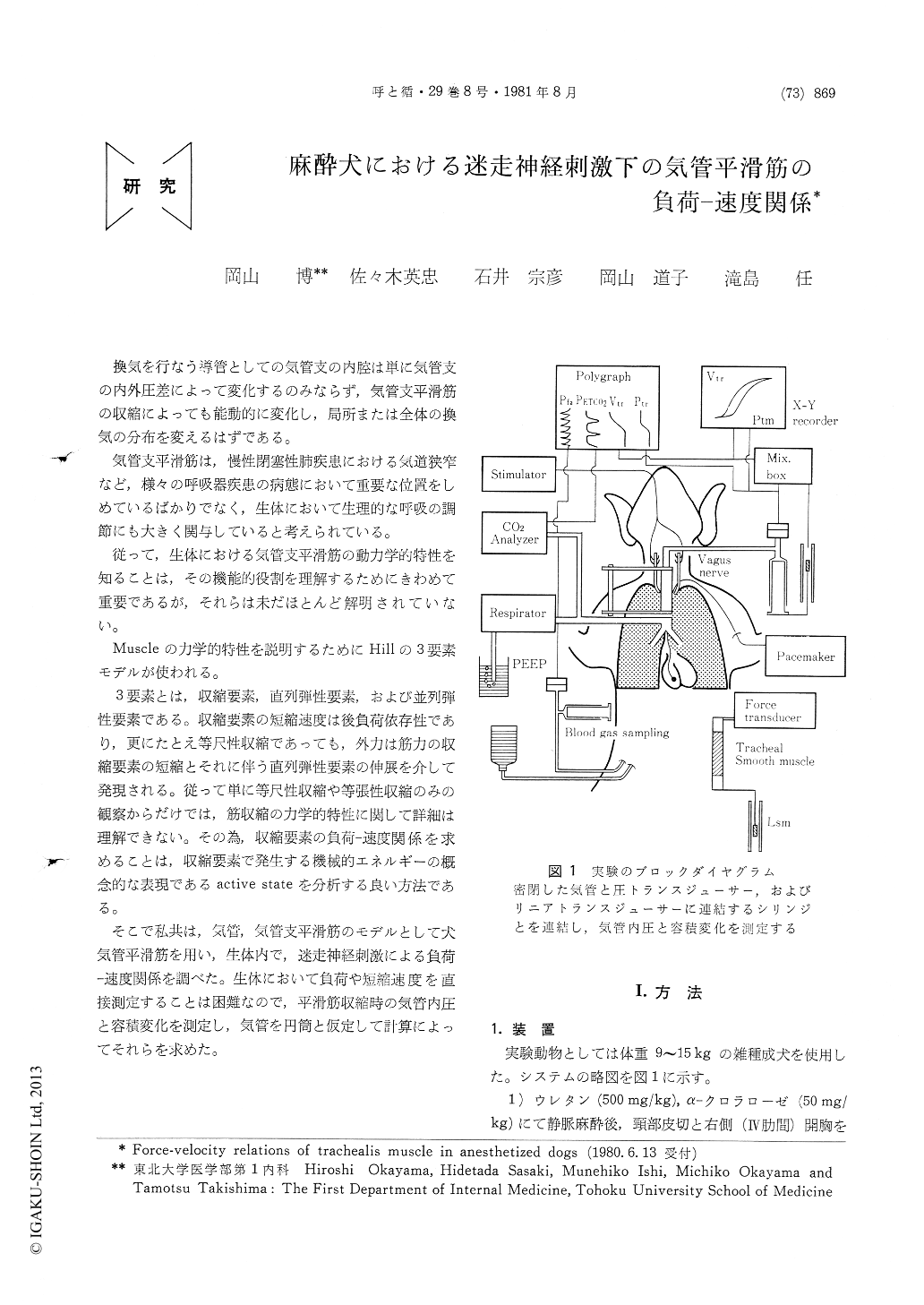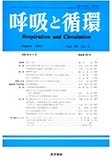Japanese
English
- 有料閲覧
- Abstract 文献概要
- 1ページ目 Look Inside
換気を行なう導管としての気管支の内腔は単に気管支の内外圧差によって変化するのみならず,気管支平滑筋の収縮によっても能動的に変化し,局所または全体の換気の分布を変えるはずである。
気管支平滑筋は,慢性閉塞性肺疾患における気道狭窄など,様々の呼吸器疾患の病態において重要な位置をしめているばかりでなく,生体において生理的な呼吸の調節にも大きく関与していると考えられている。
We measured the force-velocity relationship of the trachealis muscle in five anesthetized dogs. The trachea 10cm in length, was isolated above the carina, and the lung was ventilated by a respirator. The vagosympathetic trunks were first electrically stimulated to induce isometric contractions which resulted in the increase of tracheal pressure, the tracheal volume was then reduced (shortening velocity) of keep the tracheal pressure constant and at a give level (force). We calculated the force from transmural pressure and velocity from decreasing rate of tracheal volume respectively. The force-velocity relation-ship was hyperbolic. Using Hill's equation, we calculated the values of the asymptotes a (units of force), b (units of velocity), Po (the maximum force at Lo; Lo is the trachealis muscle length at which the maximum active tension developed), and V max (the maximum velocity at zero load). They were a=322±202g/cm2, b=0.025±0.013Lo/s, Po=976±214kg/cm2, V max=0.083±0.026Lo/s, respectively. We concluded that the shortening velocity of the trachealis muscle in vivo was approximately 48% of that in vitro (Stephens et al. : J. Appl. Physiol. 26: 685-692, 1969), although active tension was approximately 83% of the values in vitro.

Copyright © 1981, Igaku-Shoin Ltd. All rights reserved.


